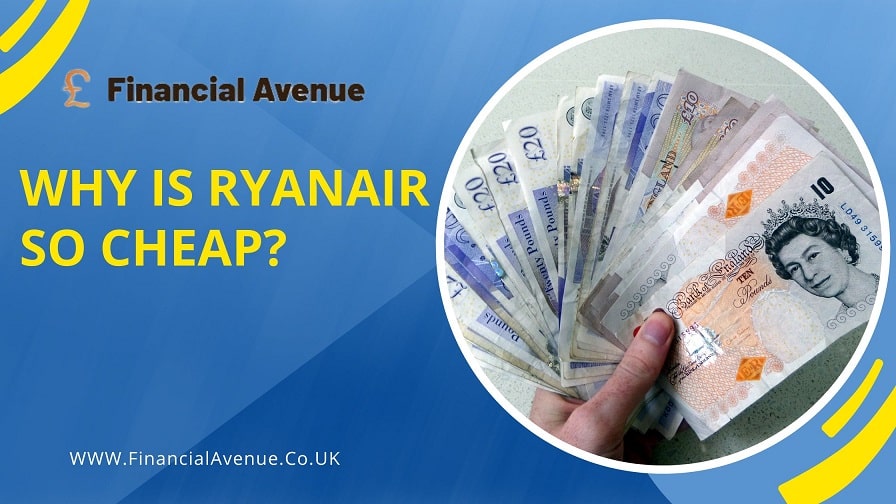Ryanair, the Irish low-cost airline, has become synonymous with affordable air travel in Europe. With its no-frills approach and rock-bottom prices, Ryanair has revolutionized the aviation industry over the past few decades. This article delves into the reasons behind why is Ryanair so cheap.
By examining its cost-cutting business model, innovative operations and fleet management strategies, ancillary revenues, regional airport selection, labor practices, technology integration, and competitive advantage, we aim to unravel the secrets behind Ryanair’s ability to offer cheap flights while maintaining profitability.
Understanding the factors that contribute to Ryanair’s success in driving down costs can offer valuable insights for both the airline industry and budget-conscious travelers alike.
The Phenomenon of Ryanair’s Low Cost Strategy
In a world where air travel can often burn a hole in our wallets, Ryanair has managed to carve a niche for itself as one of the cheapest airlines around.
With its unmistakable yellow and blue branding, Ryanair has become a household name for budget-conscious travelers. But how did this Irish airline achieve such remarkable success?
Understanding the Motivation Behind Ryanair’s Low Cost Strategy
At the heart of Ryanair’s low-cost strategy lies the relentless pursuit of cost-cutting. While other airlines may focus on luxury amenities and premium services, Ryanair takes a different approach.
Their goal is simple: provide the essentials of air travel at rock-bottom prices. By doing away with frills and focusing on bare-bones service, Ryanair has managed to make air travel accessible to the masses, opening up a whole new world of possibilities for travelers on a budget.
The Cost-Cutting Business Model of Ryanair
Ryanair’s business model revolves around finding innovative ways to keep costs as low as possible.
From the outset, they have adopted a no-nonsense approach, cutting out unnecessary expenses and passing the savings onto customers.
By offering a point-to-point model and avoiding costly hub-and-spoke operations, Ryanair keeps operations lean and efficient.
The Importance of Streamlined Operations and Efficiency
Efficiency is the name of the game for Ryanair. They have perfected the art of quick turnarounds, minimizing the time spent on the ground between flights.
This allows them to maximize aircraft utilization and minimize downtime, increasing revenue potential.
Additionally, Ryanair optimizes staff productivity by keeping their crew and maintenance teams flexible and multi-functional, reducing overhead costs.
You might be interested in knowing How Much Money is in the World?
Innovations in Operations and Fleet Management
Revolutionizing Turnaround Times and Aircraft Utilization
One of Ryanair’s most notable innovations is their remarkable turnaround times.
By streamlining processes and eliminating unnecessary procedures, they have managed to minimize the time it takes to get a plane back in the air.
This efficient approach ensures that their fleet spends more time in the sky, generating revenue, and less time on the tarmac.
The Role of Fuel Efficiency and Fleet Standardization
Ryanair understands the importance of fuel efficiency in maintaining low operating costs.
They invest in modern, fuel-efficient aircraft that consume less fuel, reducing their environmental impact and saving money in the process.
Furthermore, Ryanair maintains a standardized fleet of aircraft, which simplifies maintenance and training, resulting in cost savings and operational efficiency.
The Impact of Ancillary Revenues on Ticket Prices
Understanding the Concept of Ancillary Revenues
Ancillary revenues are additional income streams that airlines generate beyond the basic ticket price.
Ryanair has mastered the art of monetizing everything from checked baggage and priority boarding to in-flight snacks and seat selection.
These sources of revenue allow them to keep base ticket prices lower and offer customers the freedom to choose only the extras they value.
The Marketing and Pricing Strategies of Ryanair’s Ancillary Services
Ryanair’s marketing and pricing strategies for ancillary services are playful yet effective. They offer a range of options at different price points, allowing customers to customize their experience.
By highlighting the value and savings associated with bundling services, Ryanair entices travelers to explore these add-ons, ultimately contributing to their bottom line while keeping the base fares attractively low.
So, next time you fly Ryanair, don’t be surprised if you find yourself tempted by that extra legroom or a tantalizing snack deal!
Check our latest article on How Much is a Shilling Worth Today?
The Importance of Regional Airports and Route Selection
The Strategic Selection of Secondary Airports
Ryanair’s ability to offer low fares can be attributed, in part, to its strategic selection of secondary airports. While major airlines often operate out of busy and expensive hub airports, Ryanair takes advantage of smaller regional airports that are typically located outside major cities.
These secondary airports may not have the same level of infrastructure or amenities, but they come with significantly lower operating costs, allowing Ryanair to pass on the savings to its customers.
Maximizing Route Efficiency and Cost Savings
In addition to selecting secondary airports, Ryanair also focuses on maximizing route efficiency to further reduce costs.
By carefully planning its flight schedules and utilizing its fleet effectively, the airline is able to minimize idle time and increase productivity.
This approach not only optimizes resource allocation but also helps to keep operational expenses in check, contributing to the overall affordability of Ryanair flights.
Labor and Employment Practices: A Key Component of Cost Efficiency
Exploring Ryanair’s Approach to Labor Costs
One cannot discuss Ryanair’s cost advantage without considering its approach to labor costs. The airline is known for its controversial labor practices, including the use of flexible employment contracts and stringent cost-cutting measures.
While these practices have faced criticism, they have undeniably played a significant role in Ryanair’s ability to keep ticket prices low.
By carefully managing labor expenses, the airline can allocate resources more efficiently and maintain its competitive edge in the low-cost carrier market.
The Impact of Controversial Labor Policies on Cost Reduction
Ryanair’s cost-saving labor policies, although contentious, have allowed the airline to remain a cost leader in the industry.
By negotiating favorable contracts and demanding high levels of productivity from its employees, Ryanair can keep its operational expenses at a minimum.
While the airline faces ongoing scrutiny regarding its treatment of workers, it is undeniable that these labor practices have contributed to its ability to offer budget-friendly fares to millions of travelers.
The Role of Technology in Driving Down Costs
Embracing Technology for Efficient Operations
Ryanair has embraced technology as a crucial tool for driving down costs. From advanced reservation systems to automated check-in processes, the airline has leveraged digital solutions to streamline operations and enhance efficiency.
By reducing the need for manual labor and minimizing errors, technology helps Ryanair cut overhead expenses and deliver affordable flights to passengers.
The Adoption of Digital Solutions to Reduce Overhead Expenses
Digital solutions have also allowed Ryanair to reduce overhead expenses. By offering online booking platforms and encouraging customers to self-serve, the airline saves on administrative costs associated with traditional ticketing systems.
Additionally, the digitalization of various operational processes, such as crew scheduling and maintenance tracking, helps optimize resource allocation and minimize unnecessary expenditures.
Ryanair’s Competitive Advantage and Future Challenges
Analyzing Ryanair’s Position in the Low-Cost Carrier Market
Ryanair has carved out a strong position in the low-cost carrier market, thanks to its relentless focus on cost efficiency.
By consistently offering affordable fares, the airline has attracted a large customer base and has become a popular choice for budget-conscious travelers.
Its extensive network of regional airports, coupled with efficient operations, has allowed Ryanair to maintain its competitive advantage.
Anticipating Potential Obstacles and Strategies for Sustained Success
However, Ryanair does face challenges that could impact its future success. Competition from other low-cost carriers and increasing regulatory scrutiny of labor practices are among the obstacles the airline must navigate.
To sustain its position as a cost leader, Ryanair will need to continue finding innovative ways to reduce expenses while also addressing concerns related to customer satisfaction and employee welfare.
Adaptability and a willingness to evolve will be key for the airline’s continued growth in an ever-changing industry.
Final Thoughts
In conclusion, Ryanair’s ability to provide inexpensive air travel has transformed the way we approach flying. Through its relentless pursuit of cost efficiency and innovative strategies, Ryanair has disrupted the industry and made air travel accessible to a broader demographic.
However, as the aviation landscape evolves, Ryanair will face new challenges in maintaining its competitive edge. Adapting to changing consumer demands, navigating regulatory hurdles, and embracing emerging technologies will be critical for Ryanair’s continued success in the future.
Nonetheless, the impact of Ryanair’s low-cost strategy on the airline industry is undeniable, leaving a lasting legacy that has forever changed the way we view affordable air travel.
FAQ
1. How does Ryanair manage to offer such cheap flights?
Ryanair achieves its low-cost flights through a combination of factors. These include a cost-cutting business model, streamlined operations, efficient fleet management, ancillary revenues, strategic selection of regional airports, labor practices, and technology integration. By optimizing these elements, Ryanair can keep operating costs low and pass on the savings to customers.
2. Are there any trade-offs with Ryanair’s low-cost strategy?
While Ryanair’s low-cost strategy provides affordable air travel, it does come with certain trade-offs. Passengers should be aware that Ryanair operates on a no-frills model, which means that additional services and amenities often come at an extra cost. Moreover, flight schedules may be less flexible, and there may be stricter baggage limitations compared to full-service airlines.
3. Are there any potential challenges for Ryanair in the future?
Ryanair may face challenges in maintaining its competitive advantage in the evolving airline industry. Factors such as changing consumer demands, increasing regulatory requirements, and emerging technologies can impact the airline’s operations and cost structure. Additionally, competition from other low-cost carriers and economic fluctuations can pose challenges for Ryanair’s sustained success.
4. How can Ryanair’s low-cost strategy benefit travelers?
Ryanair’s low-cost strategy benefits travelers by making air travel more accessible and affordable. It allows individuals to explore various destinations at significantly lower prices, opening up opportunities for budget-conscious travelers to experience new cultures, create memories, and expand their horizons without breaking the bank. Ryanair’s affordability has played a crucial role in democratizing air travel and making it a viable option for a wider range of people.

Daniel, a seasoned professional with over 5 years of experience in banking, property, and finance, brings a wealth of expertise to the table. This authoritative blog is meticulously curated to provide you with the most up-to-date financial insights. Delving into the dynamic realms of banking and mortgages, Daniel’s passion for finances shines through every post.










